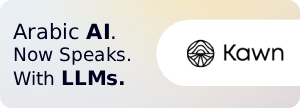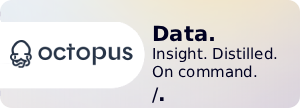If history is a ledger, computing is the margin where we scribbled everything—then forgot to edit. Time to bring the margin into the main text.
1) Origins: Vacuum Tubes, Windows of the Mind, and the Pipe That Tied It Together
In 1946, ENIAC’s public unveiling marked the dawn of general-purpose electronic computing, moving arithmetic from human desks to humming racks of vacuum tubes.
Two decades later, Doug Engelbart’s 1968 demo showed something far braver than speed: computing as augmentation—hypertext, live video links, collaborative editing, and a mouse guiding thought like a cursor on intuition. It wasn’t a product pitch; it was a civilization sketch.
Meanwhile at Bell Labs, UNIX emerged as a philosophy disguised as an operating system: simple tools, composable behaviors, and a now-mythic stroke—the pipe—that turned programs into LEGO bricks for text.
2) Computer Science, Distilled: Abstractions, Interfaces, and Standards That Last
Standards like POSIX made portability and predictability a common tongue across systems; the 2018 revision (POSIX.1-2017) and the 2024 Issue 8 refresh reaffirm that lingua franca for shells, utilities, and APIs.
In parallel, GUI lineage—from Smalltalk to Alto—injected direct manipulation into daily workflows, creating the desktop metaphor we still live within (and often struggle to escape).
3) User Experience, Three Acts: CLI → GUI → NLI
Ben Shneiderman’s “Direct Manipulation” gave us the grammar for GUIs; Jakob Nielsen reduced usability wisdom to ten heuristics that designers still recite. The “calm technology” school reminded us that the best interface often gets out of the way.
Now a third act: natural-language interfaces (NLI) fronting tool-using agents. Research like ReAct (reasoning + acting), Toolformer (self-taught tool use), and AutoGen (multi-agent collaboration) shows that language can orchestrate tools, not just describe tasks.
Mainstream OS vendors are following suit: Apple’s Private Cloud Compute pushes AI features with a formal privacy posture, and Microsoft is threading Copilot deeper into Windows. The assistant is no longer a top-level app; it’s becoming a system capability.
4) Safety and Trust by Construction: Capabilities, Isolation, and Proof
The security world has long known the limits of blanket privileges. Capability systems (EROS) and practical UNIX extensions (Capsicum) implement least privilege as actual OS primitives rather than policy wishes.
Linux pushed pragmatic isolation through namespaces and cgroups—lightweight compartments with resource governors that later powered containers and modern schedulers.
At the frontier, seL4 demonstrated that kernels can be mathematically verified end-to-end—a milestone reminding us that correctness needn’t be a poem; it can be a proof.
Overlay a Zero Trust lens (NIST SP 800-207/A): no implicit trust, granular policy, and explicit verification across every boundary. That’s not an add-on; it’s the new ground state.
5) Auditability as a Feature, Not a Forensic Afterthought
Append-only transparency logs (think Certificate Transparency and Trillian) pair Merkle proofs with public verifiability: don’t merely claim integrity—prove it. An OS can adopt the same stance for its actions and agent decisions.
6) Enter MajlisOS
A Conversational, TUI-first Operating Model:
Premise: one focused, text-native room where you speak goals, skim plans, approve risks, and watch tasks land—while a fleet of sandboxed, capability-bound agents does the legwork.
Design Moves
- TUI-first shell with threads, tasks, agents, resources, and log panes; natural language plus concise commands. Modern TUI frameworks (Textual for Python, Bubble Tea for Go) prove terminals can be rich, navigable spaces.
- Capability broker issues time-boxed, scope-boxed tokens (e.g., fs.read:/media/usb for 10 minutes). This borrows from capability OS research and Capsicum’s practical model.
- Orchestrator + message bus (pub/sub) to decompose intents, dispatch sub-tasks, and stream status via a standard log/queue (Kafka/ZeroMQ/Cloud Pub/Sub, depending on deployment).
- Isolation & resource control with Linux namespaces/cgroups; tasks resume where they left off, and each thread gets explicit cost ceilings.
- Memory you can inspect: local vector indexes (e.g., FAISS) with versioned snapshots—context you can diff, prune, and pin.
- Append-only audit log for every decision, plan, and action, with proofs akin to CT to enable third-party verification or post-hoc replay.
Why a TUI, not another window farm?
Because attention is a scarce resource. A single textual cockpit minimizes context thrash, keeps actions legible, and makes approvals fast. It aligns with calm-tech: notify only when the system actually needs your judgment.
How it feels
You: “Copy the USB trip photos into Asir, deduplicate, upload, and share the link with family.”
Planner (in-thread): four steps, two approvals (delete + external share), ETAs ticking in the Tasks pane. Approve with /approve #233. Roll back with /rollback #232. The Log pane records every decision with hashes you can verify later.
Security posture by default
- Human-in-the-loop gates for risky ops (delete/share/secret access).
- Zero-trust internals: agents talk through the broker; no implicit mutual trust.
- Secrets vault with scoped leases; offline-first mode defers network actions until explicitly allowed.
A sane roadmap
- MVP: chat shell + orchestrator; FS/Web agents; minimal capability broker; local audit log.
- Alpha: cgroups-aware scheduling, resumable tasks, vector search memory, /review and /rollback.
- Beta: secrets, calendar/mail agents (opt-in scopes), policy packs, plugin SDK.
Fit with the zeitgeist
MajlisOS doesn’t fight the OS; it speaks POSIX, runs as user-space services, and coexists with today’s apps. It simply reframes the primary UI around intent → plan → approval → action → proof, which is where the industry is going anyway (see PCC and Copilot trajectories).
7) Objections You Might Raise (and Why They’re Opportunities)
- “NLIs hallucinate.” Keep humans in the loop; mix language with concise, unambiguous commands; use tool-use patterns like ReAct/Toolformer that reduce free-form guesswork.
- “Text UIs are regressive.” Modern TUIs provide rich layouts, keyboard flight, and even web rendering—without the tab sprawl. For sustained, multi-step work, a focused cockpit outperforms window whack-a-mole.
- “Security will slow everything down.” Capability scoping (Capsicum), strong isolation (namespaces), and verified cores (seL4) show you can have both rigor and performance—especially when designed in from day one.
8) The Throughline
From ENIAC’s tubes to Engelbart’s mouse, from UNIX pipes to POSIX, from GUI heuristics to agent research, computing keeps rediscovering the same lesson: make powerful things small and composable; keep the human in charge; leave a clean trail. A conversational, TUI-first, capability-secure OS like MajlisOS doesn’t reject that lineage—it completes it.
Sources (selected)
ENIAC and early history: Computer History Museum; Penn Engineering.
Mother of All Demos (1968): Stanford MouseSite; Doug Engelbart Institute.
UNIX and pipes: Bell Labs (Ritchie); historical notes.
POSIX/SUS updates: The Open Group POSIX.1-2017/2024; IEEE.
UX canon: Shneiderman (1983); Nielsen heuristics; Calm Tech (Weiser/Brown).
Agents & tools: ReAct; Toolformer; AutoGen.
OS-level AI: Apple Private Cloud Compute; Windows Copilot integration.
Capabilities & isolation: EROS; Capsicum; Linux namespaces/cgroups.
Formal methods: seL4 verification.
Zero Trust: NIST SP 800-207/A.
Transparency logs: RFC 6962; Trillian.
TUI frameworks: Textual; Bubble Tea.
Local vector memory: FAISS.
Open the “majlis.” State your intent. Approve with judgment. Let the log tell your story—succinct, verifiable, and yours.




